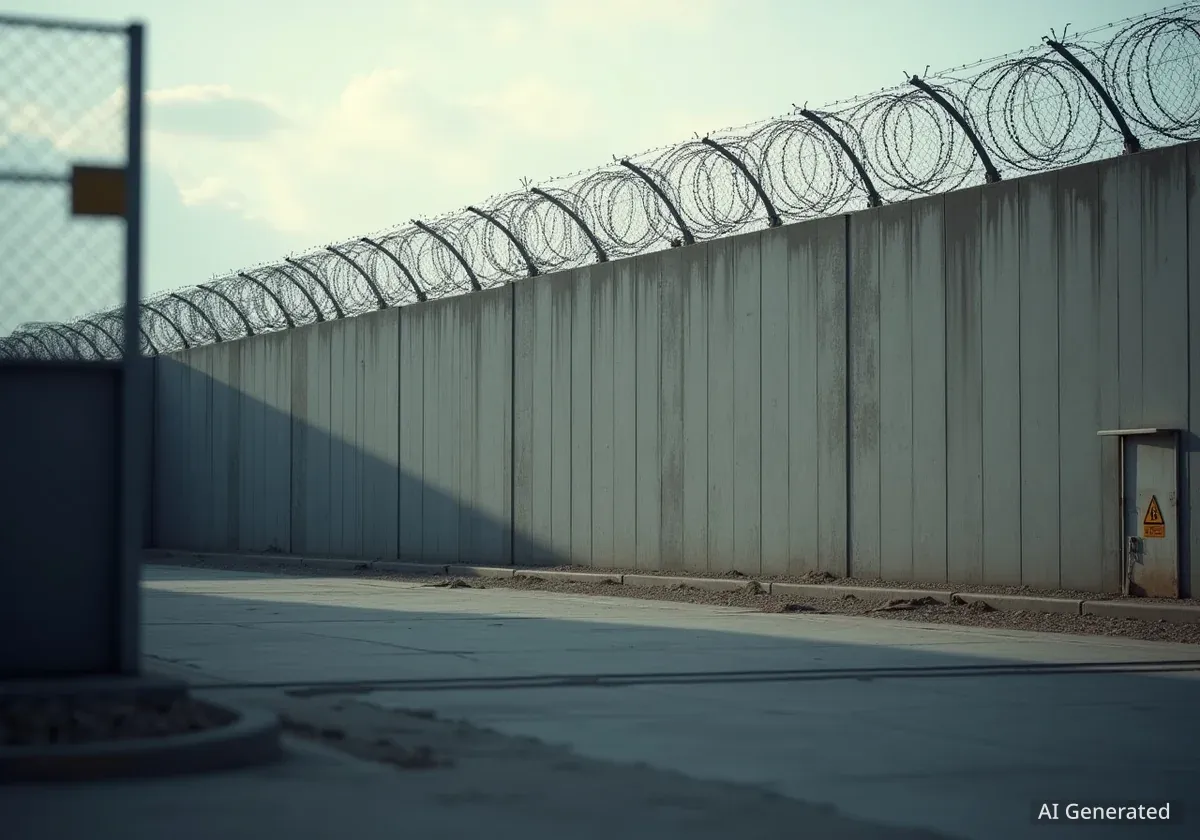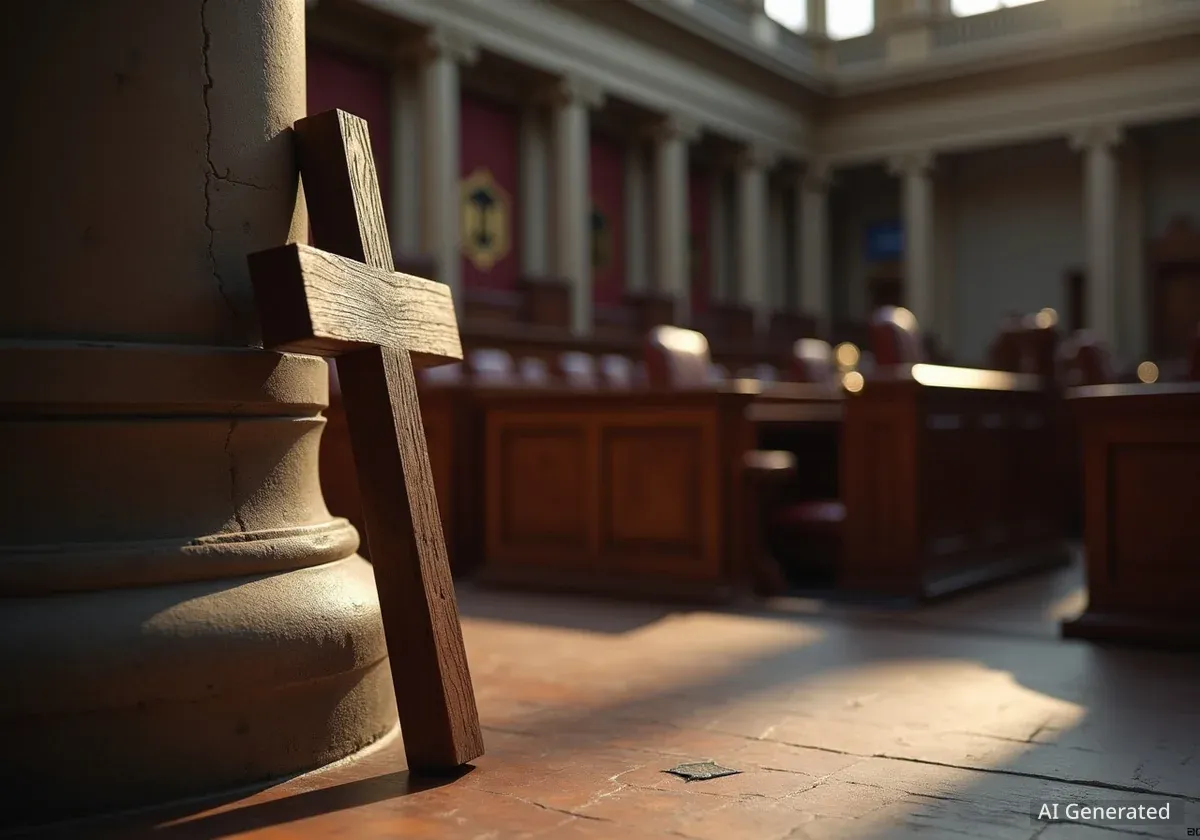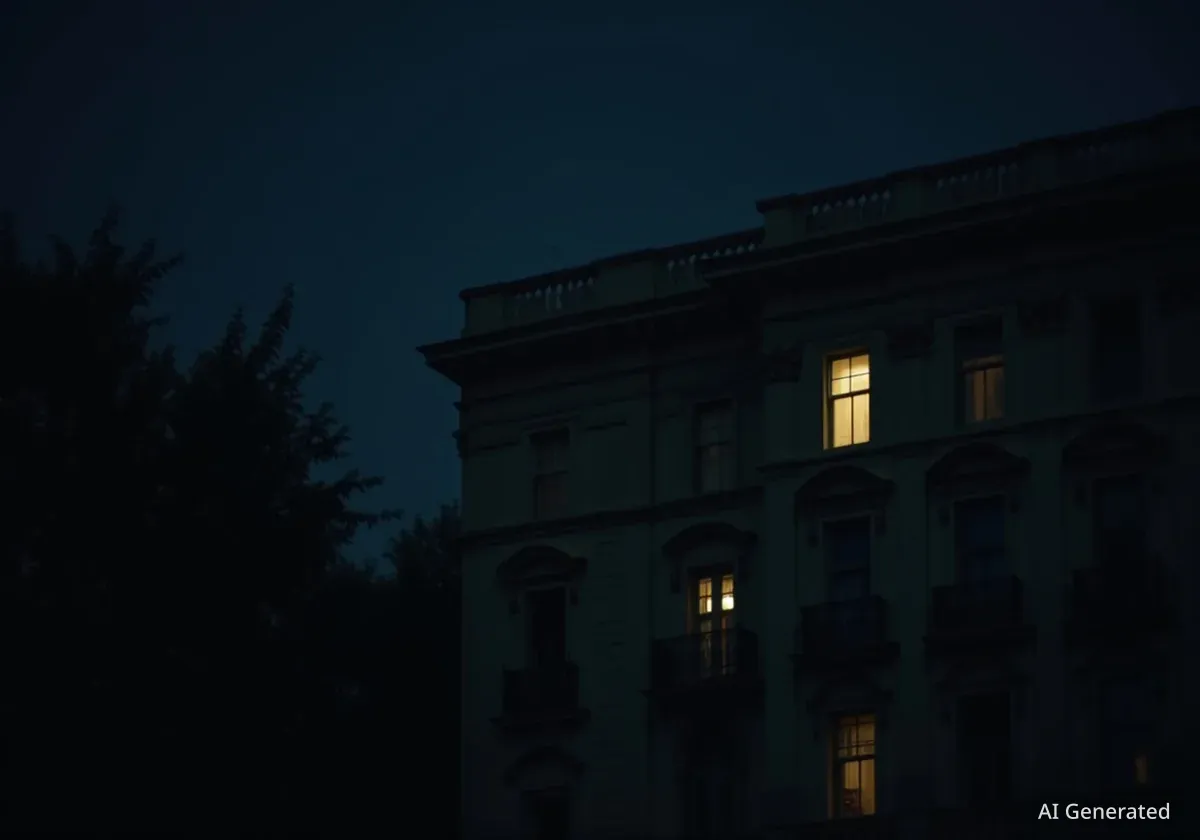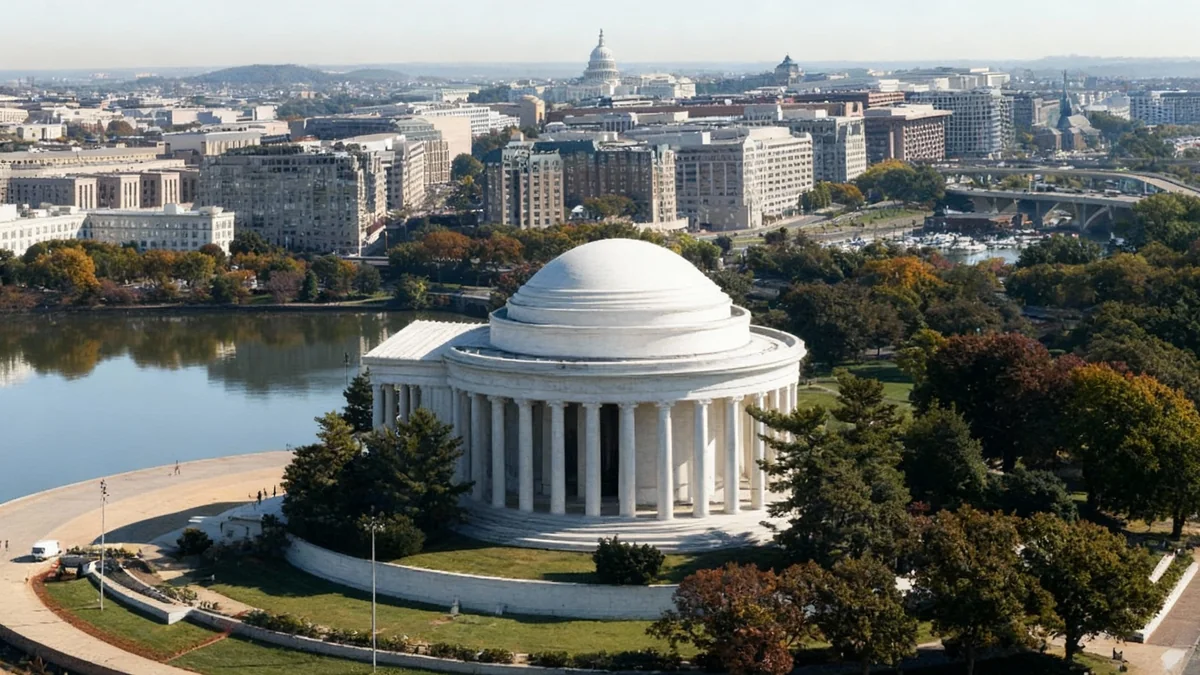Former President Donald Trump's executive order mandating neoclassical architecture for new federal buildings has drawn significant attention. This directive, similar to one issued during his first term, suggests a focus on specific design aesthetics. However, observers suggest this architectural mandate may serve as a diversion from other, more significant changes impacting urban environments and government property use.
Key Takeaways
- Trump's order requires neoclassical design for federal buildings.
- Critics view this as a distraction from broader policy impacts.
- Federal building sales and detention camp construction are key areas of impact.
- The administration's actions also affect urban militarization and disaster relief.
The Neoclassical Mandate and Its Critics
In late August, former President Trump issued an executive order. This order requires that federal buildings adopt a neoclassical architectural style. This is a repeat of a similar directive from his first presidential term. The order has sparked debate within the architectural community and among political commentators.
Many critics argue that this focus on neoclassical design is a strategic misdirection. They suggest it draws public attention away from other, more impactful policy decisions. These decisions affect cities, government assets, and the built environment across the United States. The order itself appears to be a political statement rather than a plan for widespread construction.
"Trump’s dictate is a colossal distraction from the real havoc his administration is wreaking on cities and the built environment."
Fact Check
- The White House is currently constructing a $200 million ballroom.
- The General Services Administration (GSA) initially announced the sale of 440 federal buildings.
- This list has since been reduced, but significant sales are still planned.
Historical Context of Neoclassicism
Neoclassical architecture has a long history in the United States. Structures like the U.S. Capitol Building, constructed partly by enslaved labor, showcase this style. Historically, it has been linked to powerful elites. Critics argue that this style can symbolize a selective interpretation of national ideals, overlooking historical injustices.
The executive order states that neoclassical architecture connects the modern republic to ancient democracies. It claims this reminds citizens of their rights and responsibilities. However, this interpretation often omits the power imbalances and systems of enslavement present in both ancient Rome and the early American republic.
Beyond Building Styles: Key Policy Impacts
While the architectural order garners headlines, other actions by the administration have a more concrete impact on physical spaces. One major area is the sale of federal properties. The General Services Administration (GSA) has been actively working to reduce the number of federal buildings. This initiative, once guided by the Department of Government Efficiency (DOGE), aims to streamline government assets.
The administration is likely to sell more existing neoclassical-inspired buildings than it will construct new ones. This shift represents a significant change in how federal property is managed. These sales can affect local economies and urban landscapes.
Militarization of Cities and Disaster Relief
Another area of impact is the increased presence of military personnel in urban settings. This has been observed in cities like Los Angeles, Washington, D.C., and Memphis. Such deployments can change how citizens experience public spaces. The right to freely inhabit urban areas can be affected, particularly for marginalized communities.
Additionally, the denial of disaster recovery funds to areas like tornado-stricken St. Louis has architectural consequences. Without federal aid, rebuilding efforts slow down. This leaves communities vulnerable and their built environments in disrepair. These decisions directly affect the physical recovery and resilience of cities.
Background Information
The GSA's Design Excellence Program, established in 1994, aimed to produce high-quality federal buildings. The recent executive order criticizes this program, claiming it resulted in "undistinguished" and "unappealing designs." It suggests many federal buildings from this era are not easily identifiable as civic structures.
The Rise of Detention Facilities and Data Centers
Perhaps the most significant architectural project under the administration is the construction of Immigration and Customs Enforcement (ICE) detention facilities. These facilities are designed to house undocumented immigrants. They often feature utilitarian designs, such as chain-link fences and temporary structures. These projects generate substantial profits for private sector contractors.
The long-term purpose of these facilities is a point of concern for many. There is speculation they could be adapted for broader uses in the future. Their construction represents a direct architectural response to immigration policies.
Furthermore, the administration's support for artificial intelligence (AI) has implications for infrastructure. Data centers, essential for supporting the AI industry, are growing in number. These centers are often large, anonymous, and utilitarian structures. They consume significant water and power resources. Despite their necessity, data centers are often unpopular in local communities, even in areas that generally support the administration's policies.
Architectural Education and Free Speech
The administration's influence extends to academic institutions. Attacks on universities and colleges could lead to state control over architectural education. While no direct order has forced institutions like Columbia or Harvard to teach neoclassicism, the broader climate affects intellectual freedom.
Critics argue that the real agenda is to foster a submissive stance toward the state. This goes beyond specific architectural styles. It impacts the fundamental principles of free speech and intellectual inquiry within academic settings.
The Real Architectural Agenda: Social Control
The neoclassical mandate is seen by many as a diversion. The actual architectural agenda appears to be about social control and capital accumulation. This involves organizing space to suppress dissent and expedite human suffering. The focus is less on aesthetic beauty and more on functional outcomes that serve specific political and economic goals.
For example, proposed luxury dwelling towers in Gaza, far removed from neoclassical design, illustrate this point. Such projects suggest that the administration's real interest in architecture lies in its utility for powerful individuals and profit generation, rather than its visual style. The construction of these facilities follows significant geopolitical events.
The real architectural agenda, according to observers, includes:
- The sale of government properties to private entities.
- The increased militarization of American cities.
- The construction of immigration detention camps for profit.
- The development of anonymous data centers to support the tech industry.
These actions, rather than the aesthetic debate over neoclassical columns, define the administration's true impact on the built environment. They represent a non-picturesque architectural agenda focused on control and economic gain. This underlying strategy connects to historical patterns where architectural forms served systems of power and exploitation.




